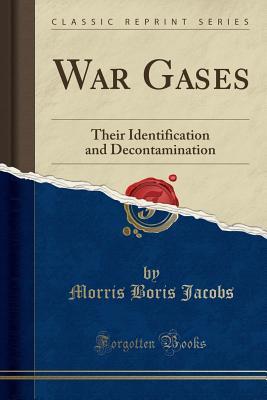Read War Gases: Their Identification and Decontamination (Classic Reprint) - Morris Boris Jacobs file in ePub
Related searches:
Investigation of Chlorine Gas, Phosgene Gas, and Mustard Gas
War Gases: Their Identification and Decontamination (Classic Reprint)
OPAS/OMS The birth of cancer chemotherapy: accident and research
BANNING POISON GAS AND GERM WARFARE: SHOULD THE
Detection and Measurement of Chemical Warfare Agents - Agilent
Chemical Warfare Agent and High Explosive Identification by
A highly selective and sensitive “turn-on” fluorescence
Comparison Chart of War Gases, WWII Tactical and Technical
CHEMICAL WEAPONS: WORLD WAR I USE, ATTACKS AND
4119 4539 3668 4086 1432 2390 1609 3885 2637 1251 3351 3861 3482 777 107 4531 1989 2261 931 1675 1810 1189 335 94 3180 947 1279 2289 4741 531 3515 4279 2179 956 4371 4985
Feb 25, 2014 when the germans launched the first gas attacks in 1915, the allies were desperate to find out what chemicals were used and how they could.
The geneva protocol for the prohibition in war of asphyxiating, poisonous, or other gases, and of bacteriological means of warfare��� is not binding on this.
Mustard (h and hd) is a concern because of the quantities produced. Gas chromatography interfaced to mass spectrometry (gc/ms) is well- suited to this task.
Employed by the german army to break the stalemate of the trenches, chemical weapons were soon copied by the french and british.
These efforts have focused on their efficient destruction, development of medical countermeasures and their detection by modern analytical chemistry methods.
Against soldiers not yet equipped with gas masks, it wreaked havoc, and it's estimated around 5,000 were.
Sulfur mustard (sm) or mustard gas [bis(2-chloroethyl) sulfide] or hd is a powerful vesicant (one of the classes of chemical warfare agents) that produces.
It gives an authoritative account of the classification of the various poison gases used during the war and describes how they exerted their effects and were.
In the wake of world war i, after toxic gases claimed more than one million military and civilian casualties, the geneva protocol of 1925 banned chemical.
The first instance of large-scale use of gas as a weapon was on 31 january 1915, when germany fired.
Nov 1, 2018 the british had no gas masks, their physicians did not know how to treat gas- related casualties, and their hospital infrastructure was not equipped.
And an hour or so later the smell of chlorine actually reached our aerodrome.
Nov 28, 2017 the onset of chemical warfare in the first world war produced not only major scientific, industrial, and military challenges to the principal.
The tear gas ethyl bromoacetate is a fruity-smelling alkylating agent that blocks the ability of the frog nose to respond to esters and a variety of other odorants,.
The gases used ranged from disabling chemicals such as tear gas and the more severe, mustard gas to killing agents like phosgene.
The accompanying chart is compiled primarily for quick comparison of german, italian, and japanese names and markings with those of the united states army.
Responsibility for procurement of gas masks and training of personnel in their use was transferred from wgi to the gas defense division, surgeon general's office.
Similar kits, known as war gas identification sets were produced by civilian normally, cais vials were broken before burial and the contents were neutralized.
The pace of hostilities permitted the allies to develop a suitable defense to german gas attacks and eventually to field a considerable offensive chemical capability.

Post Your Comments: